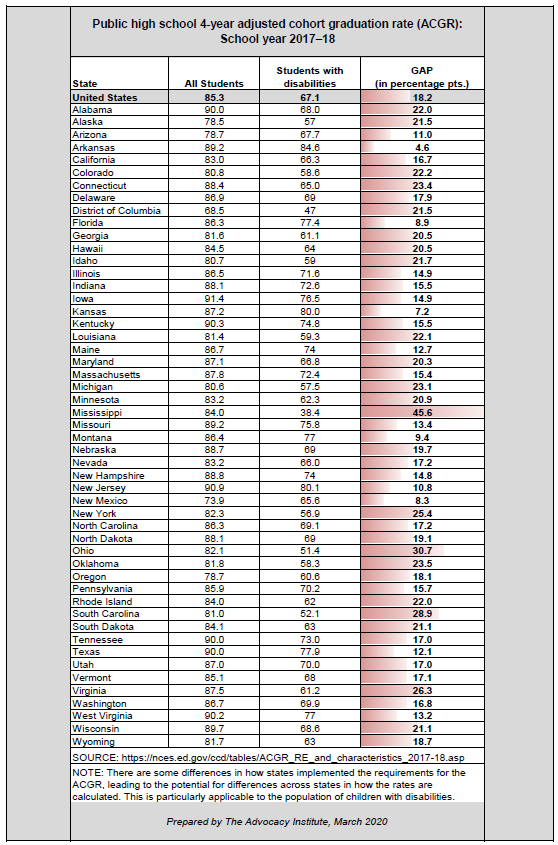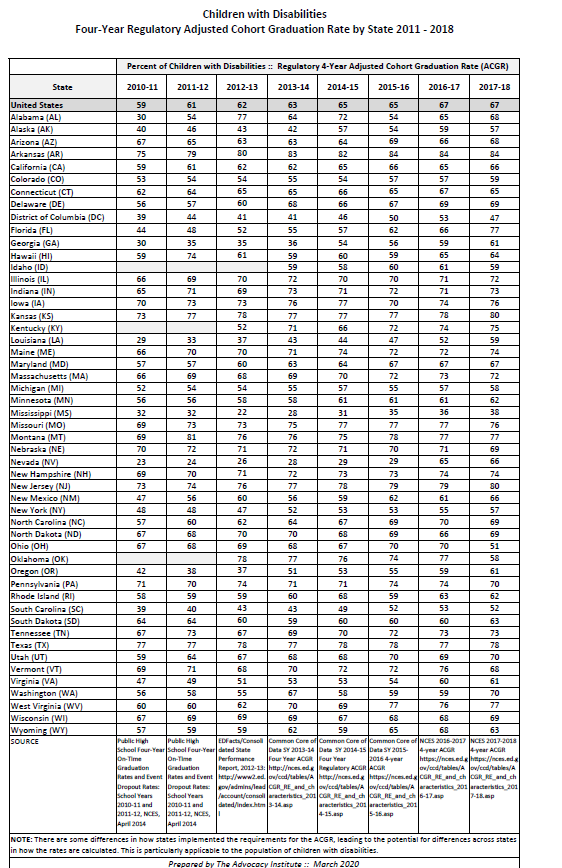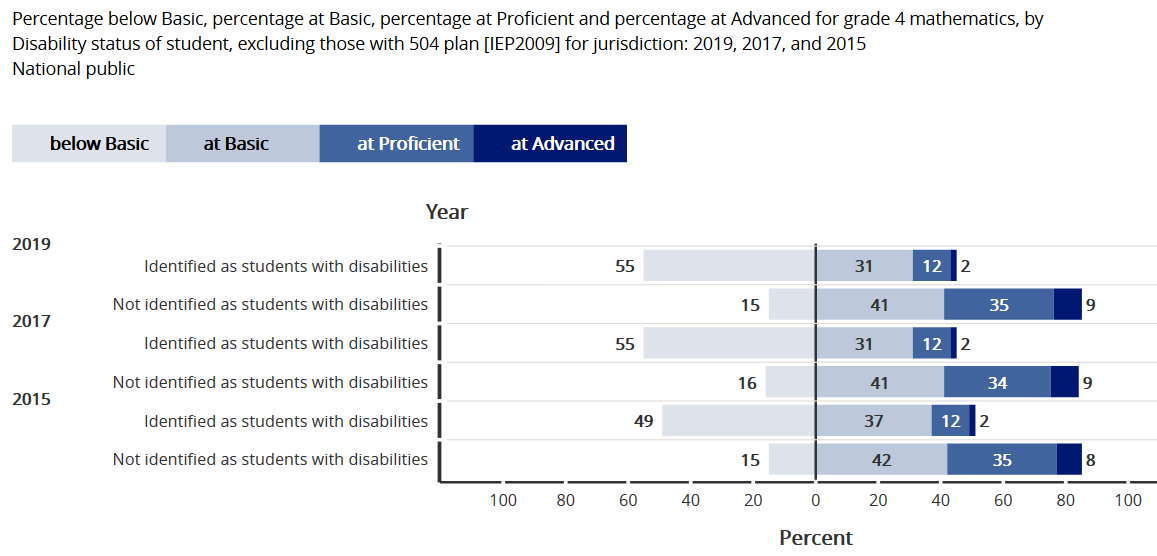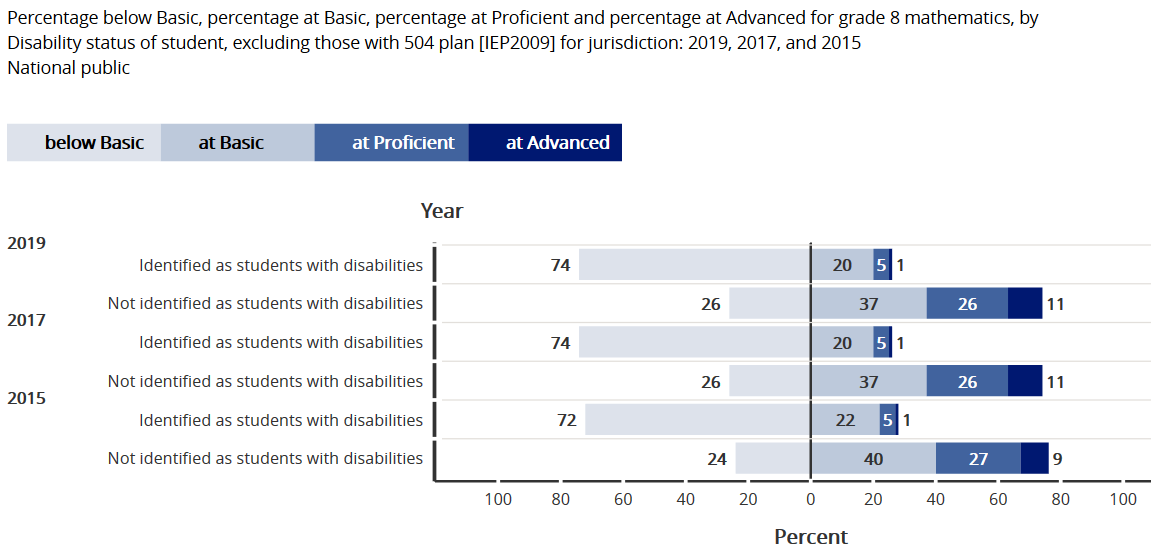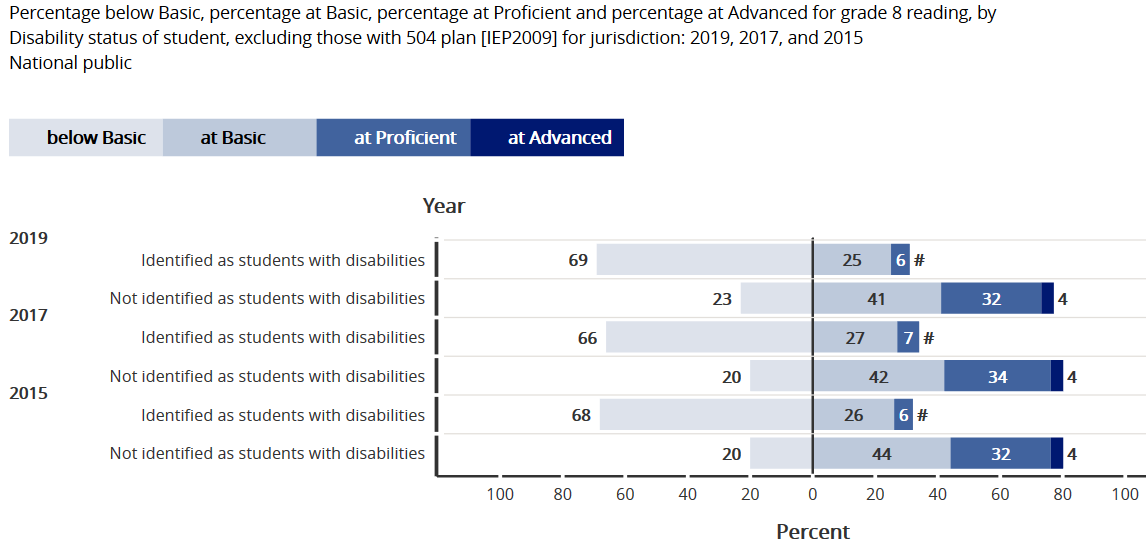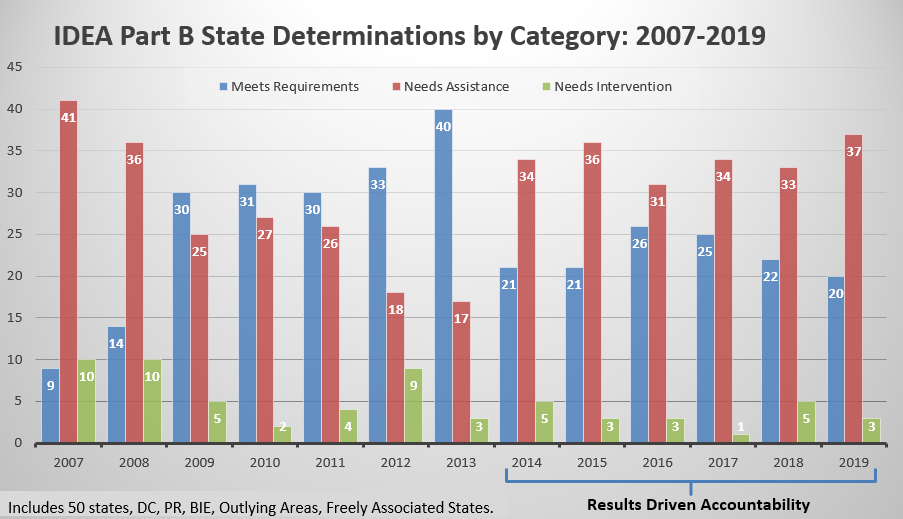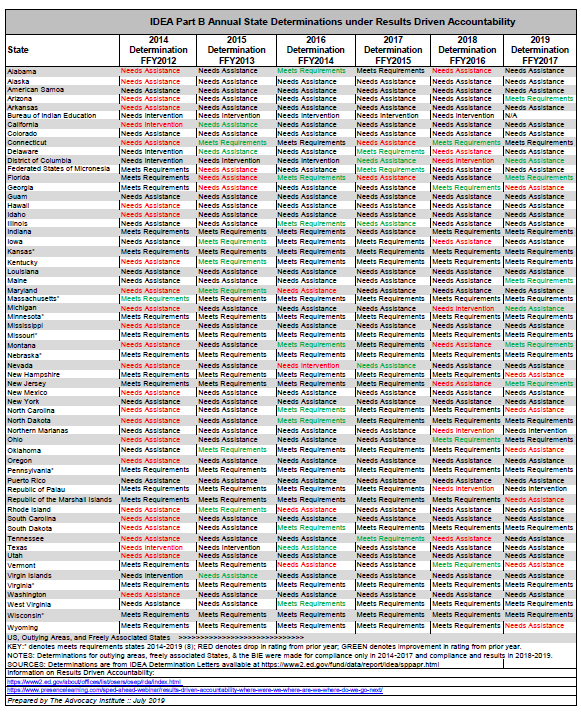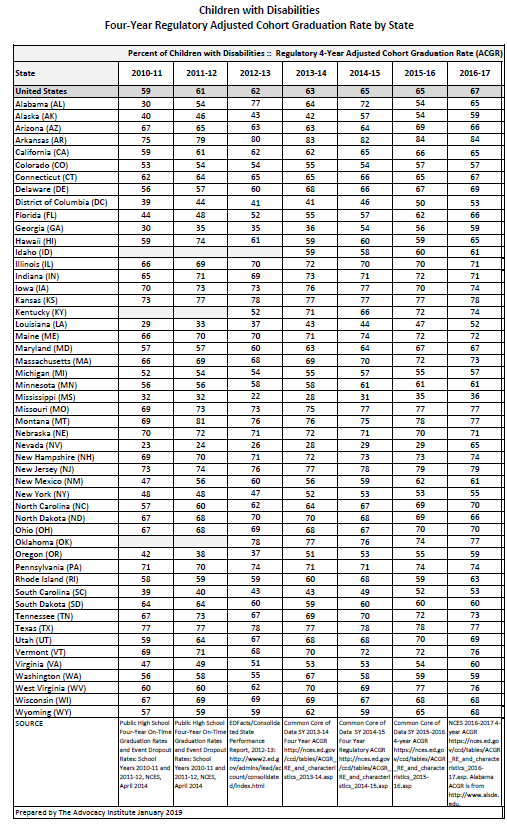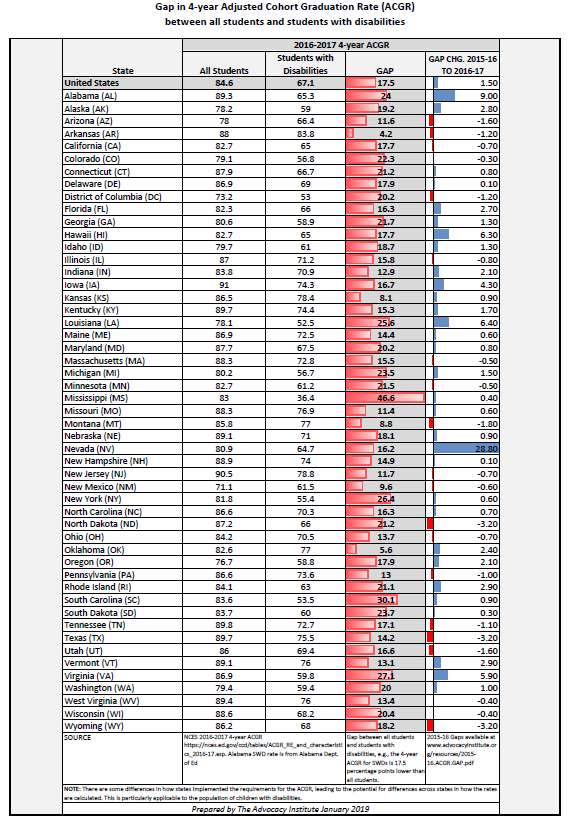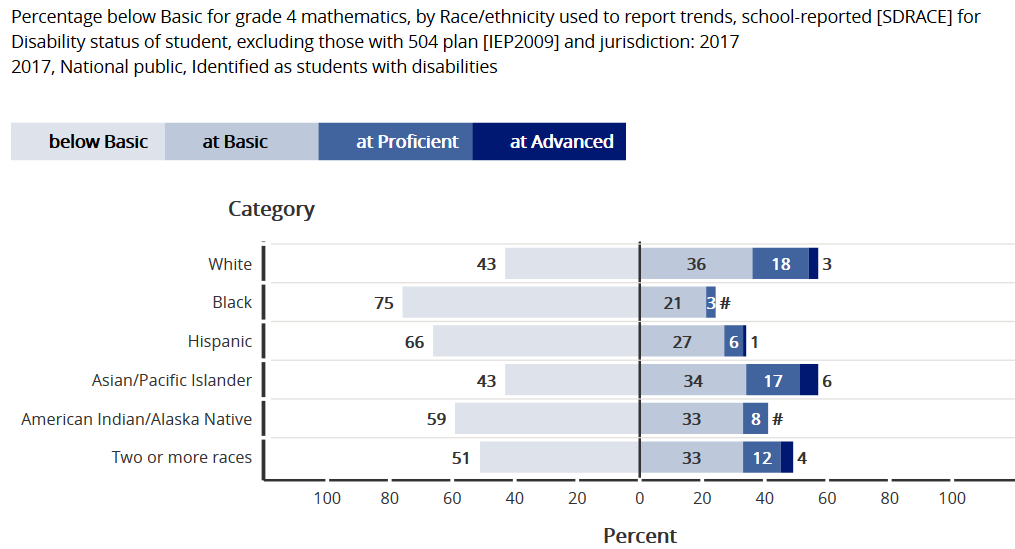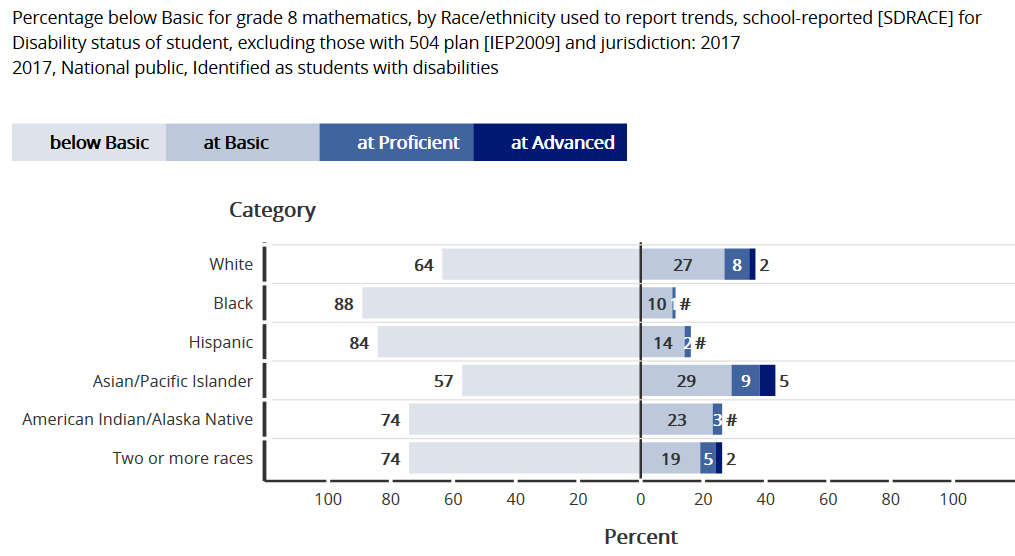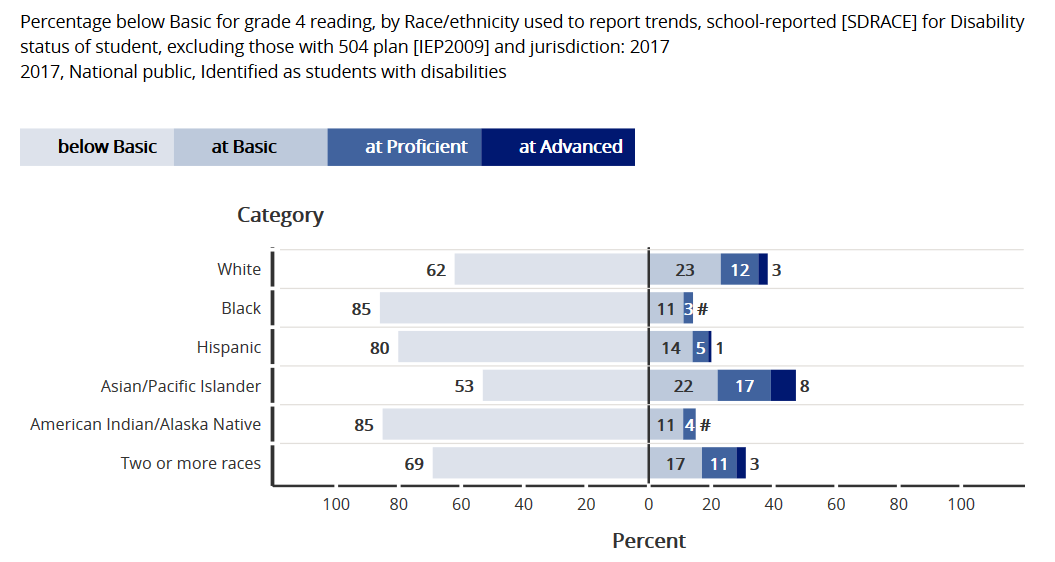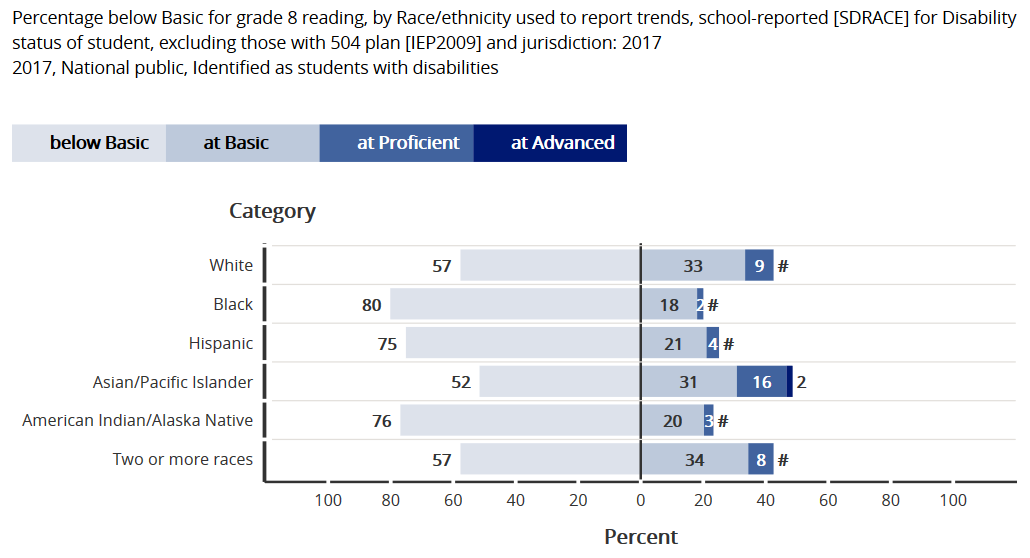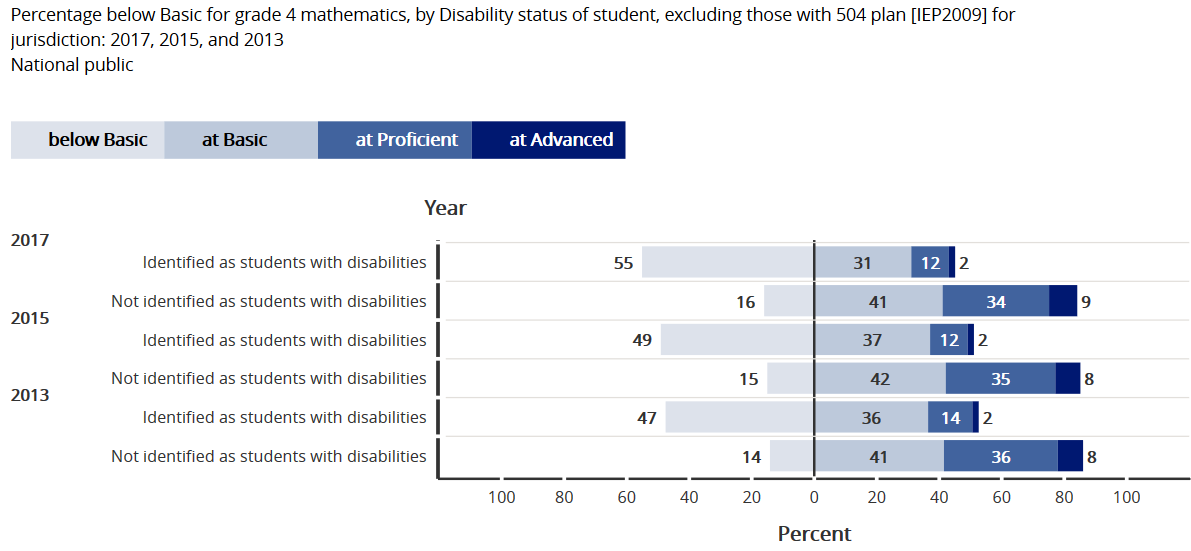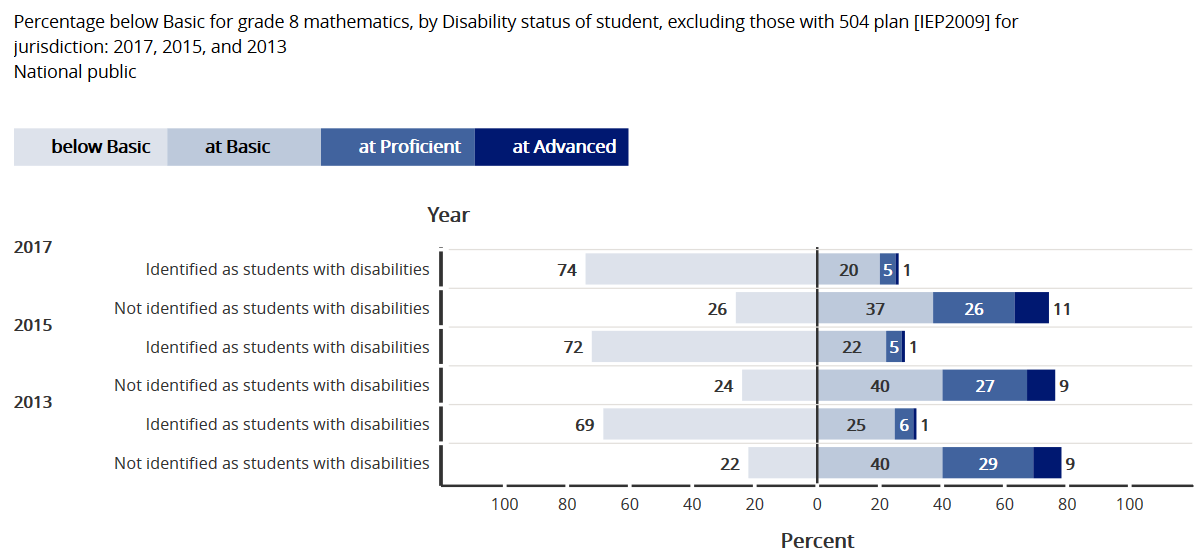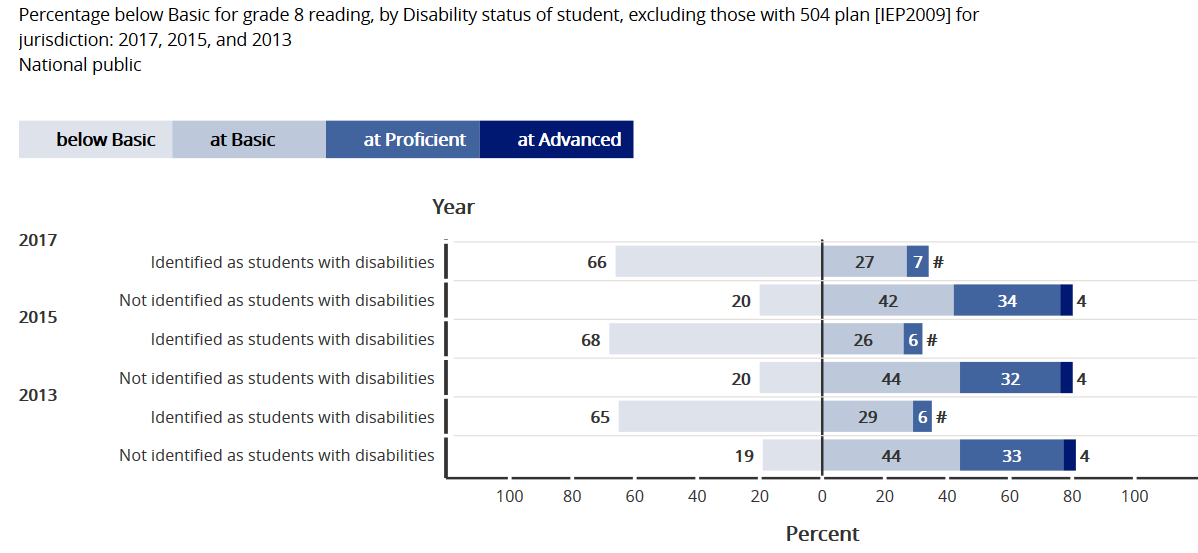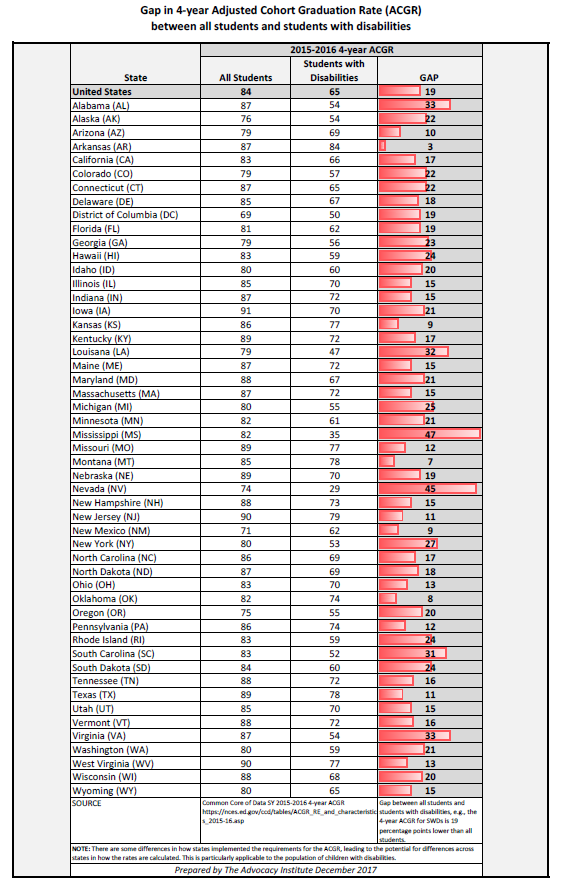In a recent blog for the American Association of School Administrators titled “Reclaiming the LRE Debate from the Courts” Associate Professor Susan C. Bon suggests a number of remedies for what she terms the “increasingly destructive and contentious disagreements over interpretation and implementation of the IDEA in public schools.” We take issue with those proposed remedies and offer our combined 100 plus years of teaching, research, teacher education, systems change, large-scale assessment, policy, and advocacy work as evidence of the experience we bring to bear on this issue.
Professor Bon’s remedies – which imply that more students with intellectual and other significant disabilities would be kept out of general education classes – ignore the 40 years of research on students with disabilities that show a positive correlation between time spent in a general education classroom and performance on standardized measures of reading and math, communication skills, social skills, engagement, breadth of social networks, pro-social behavior, fewer suspensions and expulsions, and enhanced adult outcomes in the areas of independent living, employment, and participation in inclusive community activities when compared to students educated in segregated environments (Beukelman & Mirenda, 2005; Cosier, Causton-Theoharis, & Theoharis, 2013; Guralnick, Connor, Hammond, Gottman, & Kinnish, 1996; Helmstetter, Curry, Brennan, & Sampson-Saul, 1998; Hunt, Farron-Davis, Beckstead, Curtis, & Goetz, 1994; White & Weiner, 2004). In fact, these research findings are encoded in the introductory paragraphs in IDEA 2004, where Congress finds “Almost 30 years of research and experience has demonstrated that the education of children with disabilities can be made more effective by having high expectations for such children and ensuring their access to the general education curriculum in the regular classroom, to the maximum extent possible.”
Professor Bon calls for giving precedence to the potential academic benefit of various educational placements when students’ IEPs are being written and to downplay the potential non-academic benefits. We argue that separating academic from non-academic benefits is contrary to the last 100 years of public education in the U.S. It has long been recognized that successful adulthood requires much more than proficiency in “the 3 R’s.” All students need to demonstrate proficiency in communication, collaboration, use of technology, social skills, self-determination, problem-solving and the like. To suggest that educational teams might be able to quantify the educational versus non-educational benefits to students with disabilities ignores our understanding of how children learn and what really matters when it comes to being a successful adult.
The example of the student with an IQ of 46 who is “mentally retarded” represents not only outdated and prejudicial terminology, but overestimates the importance of IQ in predicting educational achievement. A rationale for extreme caution in using a number like a student’s IQ score to guide his education program is supported by research on how well IQ scores predict student achievement. McGrew and Evans (2004) concluded:
Given the best available, theoretically and psychometrically sound, nationally standardized, individually administered intelligence test batteries, three statements hold true.
- IQ test scores, under optimal test conditions, account for 40% to 50% of current expected achievement.
- Thus, 50% to 60% of student achievement is related to variables “beyond intelligence.”
- For any given IQ test score, half of the students will obtain achievement scores at or below their IQ score. Conversely, and frequently not recognized, is that for any given IQ test score, half of the students will obtain achievement scores at or above their IQ score. (p. 6)
Micah Fialka-Feldman, a subject of the trailer of a soon to be released documentary called Intelligent Lives by Dan Habib (producer of Including Samuel), was asked how he felt when he learned that he had a 40 IQ. He responded “Well, I didn’t know what it meant so I Googled it. It said that people with 40 IQs could never live alone, go to college, or be employed. And I thought “Well, I am doing all those things!” (Habib, 2016).
Another flawed remedy is Professor Bon’s recommendation that students with disabilities who need to have “assignments modified more than 70%” would not be able to obtain educational benefit from a general education class. Even with all of our years of experience we don’t understand what Professor Bon means here. Does she mean that 70% of the general education standards are modified?
Perhaps Professor Bon’s reference to modified assignments means that the number of math problems given for homework is reduced for a student with a disability. We all have known students with cerebral palsy, for example, for whom manipulation of a pencil or computer to do 30 problems is prohibitively laborious. Yet this student could demonstrate her knowledge of the concepts of the assignment by only doing five problems. Can that student not benefit from being in general education?
Maybe Professor Bon’s standard of 70% modified means that the complexity of an assigned reading is modified to a lower reading level? We know many students with significant reading disabilities whose skills are 70% below grade level, yet they are clearly able to benefit from being in general education when they are provided with supplementary aids and services in the form of assistive technology. Nor is there typically a debate or inquiry about whether it is appropriate to educate in the general education classroom other struggling learners, e.g., immigrant students whose formal education may have been interrupted, and who may or may not be English learners, or students who are educationally disadvantaged attending Title I schools.
Professor Bon suggests that greater weight be given to the effect that a student with a disability has on a general education classroom. Here we agree with Professor Bon if she is talking about the “value-added” benefits that students with disabilities provide to a general education class. Those added benefits have been shown to occur in the realms of improved academic skills of all students (Choi, Meisenheimer, McCart, & Sailor, 2016; Theoharis & Causton-Theoharis, 2010); improved decision-making skills (Zhang et al., 2016); and improved attitudes towards diversity (Finke, McNaughton, & Drager, 2009).
Finally, Professor Bon suggests that the current LRE mandate in IDEA be preserved in future reauthorizations – not based on the plain language of the statute but on a selective review of case law. We join with a growing number of colleagues who believe that the actual mandate – “to the maximum extent appropriate, children with disabilities … are educated with children who are not disabled, and special classes, separate schooling, or other removal of children with disabilities from the regular educational environment occurs only when the nature or severity of the disability of a child is such that education in the regular classes with the use of supplementary aids and services cannot be achieved satisfactorily” [20 U.S.C. §1412(a)(5)(A)] – has not been fairly and consistently applied for thousands of students with disabilities who are systematically kept out of general education classes, as evidenced by the huge geographic disparities in the misapplication of the statutory presumption to placement decision-making.
According to the 36th Annual Report to Congress on the Implementation of IDEA (U.S. Department of Education, 2014), the percent of students with intellectual disability educated at least 80 percent of the day in general education classes ranged from lows of 4.4 in Washington, 4.8 in New Jersey, and 5.5 in Nevada, and to highs of 64 in Iowa, 48.6 in Puerto Rico, and 45.5 in Alabama.
For students taking their respective state alternate assessments, Kleinert et al. (2015) found that students with the most significant cognitive disabilities face even greater segregation. In a study involving 15 states and nearly 40,000 students, these researchers found that the vast majority (93%) of students with significant cognitive disabilities were served in self-contained classrooms, separate schools, or home settings, while only 7% were served in general education or resource room placements. Most importantly, these authors found a positive correlation between expressive communication, reading and math skill levels with increasingly inclusive classroom settings. Being educated in the general education classroom does make a difference!
In summary, too many students are “still caught in the continuum” (Sauer & Jorgensen, 2016). The time is long overdue to implement and enforce the plain language of the statute and for the U.S. Department of Education to eliminate those regulatory provisions that create straw men that serve only to undermine the statutory mandate, weaken the legal presumption, and camouflage continued discrimination on the basis of disability.
We agree with Professor Bon that the time and energy spent in litigation between parents and educators might be better spent on teaching students. Our recommendations for making that happen, however, are radically different from hers. We support efforts to scale-up the use of universal design for learning principles to all classrooms. We support efforts to expand access to communication and assistive technology to all students who need it. And we support school improvement and restructuring efforts that align with those funded by the U.S. Department of Education to the University of Kansas’ SWIFT project, including greater family and community engagement, strong administrative leadership, multi-tiered systems of supports used with fidelity, values- and evidence-based inclusive policy and practice, and integration of all support services for the benefit of all students.
These remedies won’t widen the gap between parents and schools but rather unite them in a common purpose founded on a belief that “inclusion is not about disability, nor is it only about schools. Inclusion demands that we ask, what kind of world do we want to create? What kinds of skills and commitment do people need to thrive in diverse society? By embracing inclusion as a model of social justice, we can create a world fit for all of us (Sapon-Shevin, 2003).”
Sincerely,
Cheryl M. Jorgensen, Ph.D., Inclusive Education Consultant, Author, Researcher
Kathleen B. Boundy, Co-Director, Center for Law and Education
Harold Kleinert, Ed. D., Director Emeritus, Institute for Human Development, University of Kentucky
Ricki Sabia, Senior Education Policy Advisor, National Down Syndrome Congress
Candace Cortiella, Director, The Advocacy Institute
References
Beukelman, D., & Mirenda, P. (2005). Augmentative and alternative communication: Supporting children and adults with complex communication needs (3rd ed.) Baltimore: Paul H. Brookes.
Choi, J. H., Meisenheimer, J. M., McCart, A. B., & Sailor, W. (2016). Improving learning for all students through equity-based inclusive reform practices: effectiveness of a fully integrated schoolwide model on student reading and math achievement. Remedial and Special Education [online], 1-14. doi: 10.1177/0741932516644054
Cosier, M., Causton-Theoharis, J., & Theoharis, G. (2013). Does access matter? Time in general education and achievement for students with disabilities. Remedial and Special Education, 34(6), 323-332.
Finke, E.H., McNaughton, D.B., & Drager, K.D. (2998). ‘All children can and should have the opportunity to learn”: General education teachers’ perspectives on including children with autism spectrum disorder who require AAC. Augmentative and Alternative Communication, 25(2), 110-122.
Guralnick, M. J., Connor, R., Hammond, M., Gottman, J. M., & Kinnish, K. (1996). Immediate effects of mainstreamed settings on the social interactions and social integration of preschool children. American Journal on Mental Retardation, 100, 359-377.
Habib, D. (Producer). (2016). Intelligent lives [Motion Picture Trailer] Durham, NH: University of New Hampshire, Institute on Disability.
Helmstetter, E., Curry, C. A., Brennan, M., & Sampson-Saul, M. (1998). Comparison of general and special education classrooms of students with severe disabilities. Education and Training in Mental Retardation and Developmental Disabilities, 33, 216-227.
Hunt, P., Farron-Davis, F., Beckstead, S., Curtis, D., & Goetz, L. (1994). Evaluating the effects of placement of students with severe disabilities in general education versus special classes. Journal of the Association for Persons with Severe Handicaps, 19, 200-214.
Individuals with Disabilities Education Improvement Act, PL 108-446, 20 U.S.C. §§1400 et seq. (2004).
Kleinert et al., (2015). Where students with the most significant cognitive disabilities are taught: Implications for general curriculum access. Exceptional Children, 81(3), 312-328.
McGrew, K. S., Evans, J. (2004). Expectations for students with cognitive disabilities: Is the cup half empty or half full? Can the cup overflow? (Synthesis Report 54). Minneapolis: University of Minnesota, National Center on Educational Outcomes.
Sapon-Shevin, M. (2003). Inclusion as a matter of social justice. Educational Leadership, 61(2), 25-28.
Theoharis, G., & Causton-Theoharis, J. (2010) Include, belong, learn. Educational Leadership, 68(2). Retrieved from http://www.ascd.org/publications/educational-leadership/oct10/vol68/num02/Include,-Belong,-Learn.aspx
U.S. Department of Education. (2014). Thirty-sixth annual report to Congress on the implementation of the Individuals with Disabilities Education Act, 2013. Retrieved from http://www2.ed.gov/about/reports/annual/osep/2013/parts-b-c/index.html
White, J., & Weiner, J. S. (2004). Influence of least restrictive environment and community based training on integrated employment outcomes for transitioning students with severe disabilities. Journal of Vocational Rehabilitation, 21(3), 149-156.
Zhang, X., et al. (2016). Improving children’s competence as decision makers: Contrasting effects of collaborative interaction and direct instruction. American Educational Research Journal, 53, 194-223. doi: 10:3102/0002831215618663
